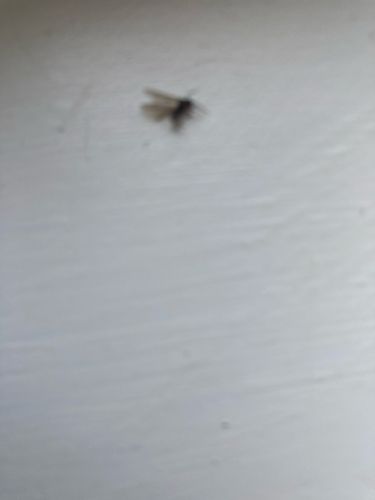Fly
Scientific Name: Too blurry to determine accurately, but belongs to the Order Diptera
Order & Family: Order: Diptera (True Flies)
Size: Highly variable, typically ranging from 1 mm to 30 mm depending on the species. The one in the image appears to be a smaller to medium-sized fly.

Natural Habitat
Flies are found in nearly every terrestrial habitat on Earth, from urban environments to forests, deserts, and polar regions. Their presence is often associated with available food sources and breeding sites, which can include decaying matter, water bodies, or other organisms.
Diet & Feeding
The diet of flies varies widely by species. Many generalist flies, like house flies, feed on decaying organic matter, garbage, feces, and sugary substances. Other flies are parasitic, predacious, or feed on nectar and pollen.
Behavior Patterns
Flies are typically active during the day, performing various behaviors such as seeking food, mates, and suitable places to lay eggs. Some species, like house flies, are attracted to light, while others might be more active in dim conditions. Their erratic flight patterns are often a defense mechanism.
Risks & Benefits
Risks include being vectors for diseases (e.g., house flies carrying bacteria) and agricultural pests. Benefits include being important pollinators (e.g., hoverflies), decomposers, and a food source for other animals. Some flies are also used in forensic entomology.
Identified on: 8/14/2025